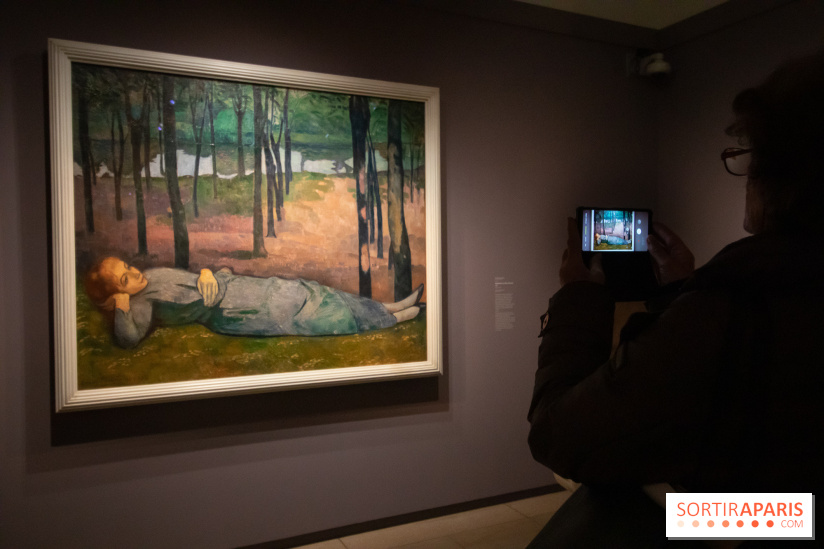For the exhibition Le Talisman de Sérusier, une prophétie de la couleur, the Musée d'Orsay brings together over 60 works by Paul Gauguin, Emile Bernard, Maurice Denis and Edouard Vuillard around Sérusier's masterpiece. Initially presented from January 29 to April 28, 2019, the exhibition has been extended to June 2, 2019.
Painted in October 1888, Paul Sérusier 's small (270x210mm) painting under Gauguin' s direction became theicon of the Nabis thanks to its pure, abstract painting. But why? And how? The exhibition takes us behind the scenes of its creation, in the light of the latest discoveries about the painting.
The first to recount the work was Maurice Denis, its owner, who explained thatit was born during a lesson given by Gauguin to Sérusier, outdoors at Pont-Avent. He is said to have said to Sérusier: "How do you see this tree? Is it green? Then paint it green, the most beautiful green on your palette; and this shadow, rather blue? Don't be afraid to paint it as blue as possible".
We now know that this beautiful story, about a painting lesson from Gauguin to Sérusier that made the pupil one of the masters of the Nabis movement, is fabricated. The fact remains that Paul Sérusier, only 23 years old at the time, produced "Le Talisman", a synthetic work that highlights the elements on a simple plank of wood, a work that turned art on its head in Paris, and which deserves an exhibition 130 years after its creation.
This exhibition shows the important impact of Gauguin's advice on the young Sérusier through his correspondence with Maurice Denis. It includes Paul Sérusier's "theoretical" works, such as Cercle chromatique, Dissonances chaudes/Dissonances froides and ABC de la Peinture, as well as major works such as Pierre Bonnard's Les Voiliers, régates(circa 1932), Edouard Vuillard's Portrait de Ker-Xavier Roussel dit Le Liseur (circa 1890) and Emile Bernard's La Madeleine au Bois d'amour, inspired by Sérusier.
What all these works have in common is the use of pure color, difficult to capture with a camera. We sincerely advise you to discover this very pleasant, if small, exhibition, which reveals the golden hues on the works and the dense work of landscapes so raw seen from afar.
Please note that it's been over 4 years since our last visit, so the place and experience may have changed.
Dates and Opening Time
From January 29, 2019 to June 2, 2019
Location
Musée d'Orsay
62 rue de Lille
75007 Paris 7
Prices
-26 ans UE: Free
tarif réduit: €11
tarif plein: €14
Recommended age
For all
Official website
www.musee-orsay.fr
More information
Opening hours: 9.30am-6pm except Mondays, Thursday evenings until 9.45pm























